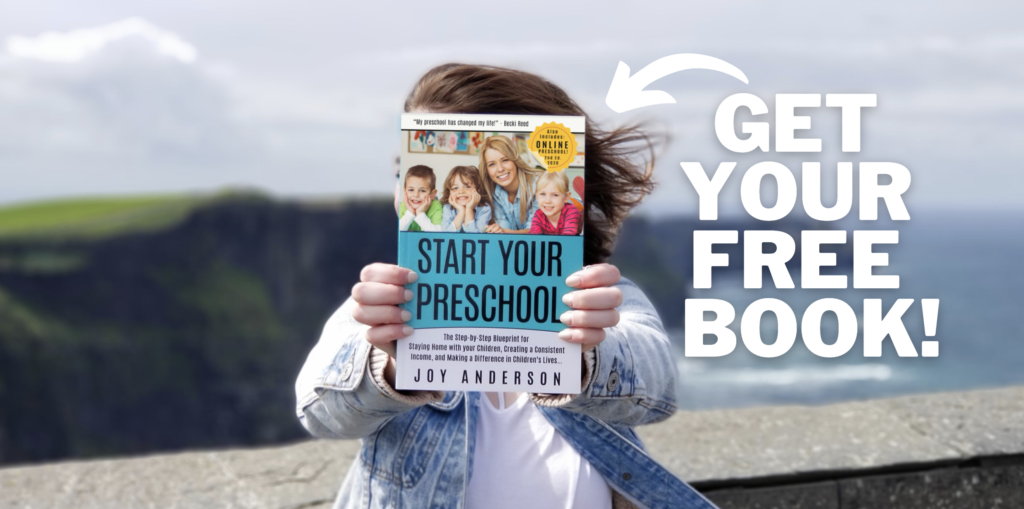We’ve all heard the question: Will you teach my child to read before kindergarten? But as parents and educators, we should probably be asking ourselves a different question: How can I instill a love of reading in my children and students? Join us today as we’ll teach you how to help your preschoolers be excited to learn to read and be excited to want to read.
Vanessa Levin has always believed that learning letters is not as simple as it sounds. She teaches parents and teachers how to be more intentional about their strategies towards a learning child. Tune in and find out how you can pave the way for your child to develop a love of reading!
How It All Began for Vanessa
If you have been around in the world of preschool for some time, you have probably heard of Vanessa Levin with her Pre-K Pages. For over 20 years, she has taught in the preschool district passionately. She has also spoken in over a hundred conferences throughout her devoted years.
Back in 2000, she created a website when her district required every teacher to have one for their evaluation. But because this was a time when blogs did not even exist yet, not a single parent read it. Fortunately, teachers found it helpful!
When their district started to revamp their curriculum, Vanessa already had second thoughts about the approach. The curriculum promoted that they teach children one letter a day, and she knew that this method was not going to work for her preschoolers. She wrote all about her thoughts on her website without any goal of influencing others, but little did she know that all her words there would turn into a book 20 years later.
The Four Strategies of Reading Readiness
Believe it or not, we often misunderstand the whole reading readiness process of a preschooler. These four concepts will shed new light on how you teach a child to read. The good news is that you may already be doing some of these strategies! Let’s dive in to the new things you can do and how you can give more attention to what you’re already doing.
Phonological Awareness
The strategies for phonological awareness are surprisingly simple, but often overlooked. There may be so many strategies that you are already doing without even realizing how beneficial they are!
For example, it’s very helpful to read aloud books that rhyme. When preschoolers hear rhyming stories, they are being exposed to the rhythm and repetition that’s going on in the English language.
Find engaging books and ensure reading them stories consistently. The best part of phonological awareness is that it’s all auditory. You aren’t required to prepare so many things. All you need is a fun book and a time for storytelling!
Print Concept
It’s common for preschoolers to grab a book and act like they’re reading it even if they can’t even recognize letters yet. While this may just look like innocent acting, it’s actually the print concept at play.
When a child turns pages and points at pictures and words, this means you are doing something right. Environmental print encourages reading a lot! It helps to stick vocabulary words with pictures around the room.
It’s also worth mentioning that teachers can use recycled prints such as cereal cardboards and labeled carton containers. Another great tip is to provide a copy of reading materials to students so they can try to associate what you’re reading with the pictures and words that they have in hand.
The Big One: Letter Knowledge
This is definitely “the big one.” When a preschooler finally recognizes a letter, it gives the teachers and parents a strong sense of accomplishment. The downside of this fact is that we tend to push the pace in the reading process. This leads teachers and parents to disregard the child’s process of letter knowledge.
There are three stages to the process:
- The child acknowledges that the letter has a shape.
- The child acknowledges that these letters have names.
- The child identifies the name of that letter.
Here’s an interesting example: Did you know that most children will identify the letter “F” as “Facebook?” This means the child has accomplished two-thirds of the work. He acknowledges the letter, and he is aware that it has a name. The missing part is that he named the letter wrong.
When teachers and parents understand that letter knowledge is a process that every child naturally undergoes, it becomes less daunting.
Oral Language
Many parents underestimate the importance of oral language. They think that because their children are already speaking well, there’s nothing to worry about in this aspect. But there’s so much more to oral language than just merely uttering complete sentences.
Research shows that oral language is strengthened by talking with peers. The free play or “center time” you give to your preschoolers is already an excellent opportunity for oral language development!
It’s great to know that an hour of free play is a good chunk of time. Also, you have to ensure that the children can do so in an unstructured environment.
Follow Vanessa and Get Her Book
As we mentioned, some strategies may already be part of your routine. The key is to be more intentional about every opportunity you give them – from free play and storytime to sticking prints around the room.
Now that you are more aware of the strategies, enhance what you are already doing! Vanessa’s book can greatly help you with that, so make sure you get your own copy.
Additional Resources:
- Follow Vanessa and get her book, Teach Smarter: https://www.pre-kpages.com
- Head over to Apple Podcasts to hear the full interview. While you’re there, please leave us a rating and a review. (We hope we’ve earned your 5 stars!)
- Start my FREE “7 Students in 7 Days” Challenge”
- Get my FREE “Start Your Preschool” Book (+$7.95 s&h)
